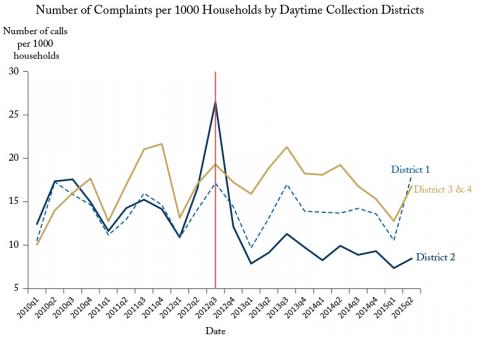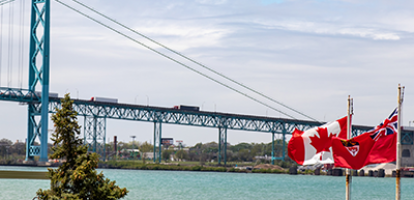From: Benjamin Dachis and Jacob Kim
To: Toronto City Council
Date: March 15, 2018
Re: How contracting waste services can improve municipal services
After an unsuccessful push in early 2017 to put up for contract garbage collection in parts of eastern Toronto, it’s time to bring the idea back to the table. Toronto should put up more waste services for contract because doing so can both lower costs and improve service for residents.
Toronto is divided into four curbside collection districts. District 1 is Etobicoke, which contracted out garbage service in 1995. District 2 lies between Yonge Street and the Humber River. Districts 3 and 4 are areas east of Yonge Street. Since August 2012, GFL, a private company, has been collecting waste in District 2. This contract has since cut the city’s cost by $11.1 million per year, according to the city.
A previous C.D. Howe Institute study showed that competition through contracting drives costs down. Ontario cities with fully contracted-out garbage service have the lowest operating costs. There are more benefits than cost-savings. A well-designed contract with clearly defined outcomes to which contractors must adhere could also ensure consistent service quality. Toronto’s contract with GFL does exactly that, setting out performance targets such as diversion rate, customer complaints, health and safety violations, etc. The contractor is held accountable for any breach of contract.
The result is, in addition to the savings, residents of the contracted districts are enjoying improved service. We analyzed 312,844 records from 311 service request calls from January 2010 to June 2015. There was a significant reduction in the quarterly number of calls per thousand households in each District concerning missed pickups (See figure).
The vertical line in the figure marks the beginning date of contracted service in District 2. We classify districts into three groups: publicly serviced (District 3 & 4), contracted out in 2012 (District 2), and contracted out in 1995 (District 1). The largest change, as expected, is observed in District 2, where the complaint rate increased dramatically in the starting quarter and then decreased substantially.
Compared to before, the average monthly complaint rate in District 2 has been reduced by 28 percent. That includes the large spike in the complaint rate during the initial rollout of contracting. The same cannot be said about District 3 and 4 where the average complaint rate rose by a small amount, 9 percent. The complaint rate was essentially unchanged for District 1.
It is time that Toronto City Council returns to the debate on how Toronto picks up household waste. Doing so can both save money and improve services for residents.
Benjamin Dachis is Associate Director of Research and Jacob Kim is a Researcher at the C.D. Howe Institute.
To send a comment or leave feedback, email us at blog@cdhowe.org.






